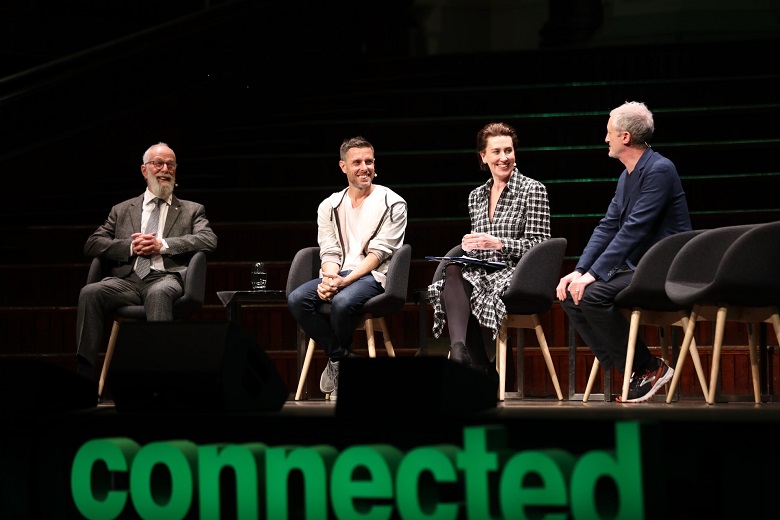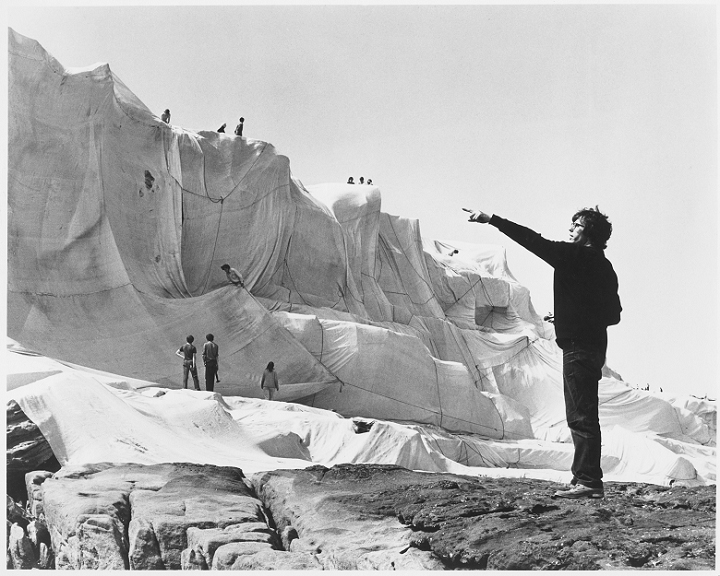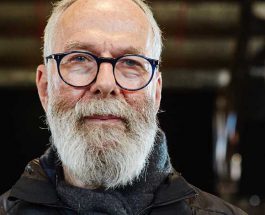
The man who brought the landmark ‘Wrapped Coast’ art installation to Sydney in the 1960s says it would be near impossible to get a similar public art project up today because of legislative red tape.
John Kaldor, founder of the Kaldor Public Art Projects, was a panelist at the CityTalks events at Town Hall on Tuesday night.
Public art is an integral part of Sydney, however it is often bound and constrained by bureaucratic processes, the audience heard.
Mr Kaldor was instrumental in the ‘Wrapped Coast’ project in 1968 and 1969, which saw 2.5 kilometres of 26-metre high coast and cliffs at Little Bay cloaked in fabric and rope.
It was the first major environmental project created by the artists Christo and Jeanne-Claude, more than a decade before they became famous for large-scale environmental projects at sites around the world, and the largest single artwork that had ever been made.

Mr Kaldor said it would take years to do a similar project today because it is a different era.
“Today, you couldn’t do a Christo… we just wouldn’t get permission,” he said.
Mr Kaldor said governments have a role in making the process smoother, and the City of Sydney, which has collaborated with the Public Art Projects for a decade, has shown how this can be done.
“I find certainly working with the city a great pleasure because it’s not only financial help but also the enthusiasm that projects are embraced by the Lord Mayor (Clover Moore) and her team,” he said.
Public artworks become city markers

Cr Moore said she wanted the City of Sydney to be a champion for culture and the arts.
“(Kaldor Public Art Projects) has not only provided Sydneysiders with the opportunity to see ground-breaking work, it has also inspired us here at the city in our commitment to making art an integral part of Sydney’s experience,” she said.
Part of the pleasure of public art lies in the unexpected and its ability to make the public look at the urban environment with new eyes, Cr Moore said.
“The best public artworks, whatever their scale, become city markers, giving expression to the ethos of the place itself and its people, its past and its present,” she said.
“And we want Sydney to be known for its cultural landscape, as much as its spectacular natural surroundings.”
UK artist Michael Landy, who created the Kaldor Public Art Project Acts of Kindness in Sydney in 2011, said his attempt to share his art with the public was often frustrated by bureaucratic barriers.
“They’re making a lot of barriers to stop people experiencing it the way I want people to experience it,” he said.
City of Sydney Design Director Bridget Smyth said government support is very important.
“(It’s a lot) about political leadership, that we actually have politicians who believe that art and artists can make a difference,” Ms Smyth said at the event. “And it’s not choosing between hospitals or art, we need both.”
An economic driver

Cr Moore said a report by the Creative Industries Innovation Centre found that the creative arts industry is responsible for $3.2 billion worth of exports nationally, with an overall value to the national economy of over $32 million.
The City of Sydney’s 2017 Floor Space and Employment Survey identified some 33,000 creative industry workers in the Sydney area.
“The city of Sydney is the absolute heart of this economy,” Cr Moore said.
Mr Kaldor said that temporary artworks are important because they form part of the cultural memory.
“In a way, it becomes part of our cultural memory, even though they were temporary and, in a way, if you have something permanent, it’s sort of there, you don’t notice it,” he said at the event.
“But if something is in your memory, it’s passed on from generation to generation, and this is what I really enjoy about it.”
The Art Gallery of NSW is currently celebrating 50 years of the Kaldor Public Art Projects with its exhibition Making Art Public.
Comment below to have your say on this story.
If you have a news story or tip-off, get in touch at editorial@governmentnews.com.au.
Sign up to the Government News newsletter
We should invest public art but sadly the artform that earns the most revenue (Music) is not funded properly and very limited encouragement for new music (not classical) finds its way to new artists.